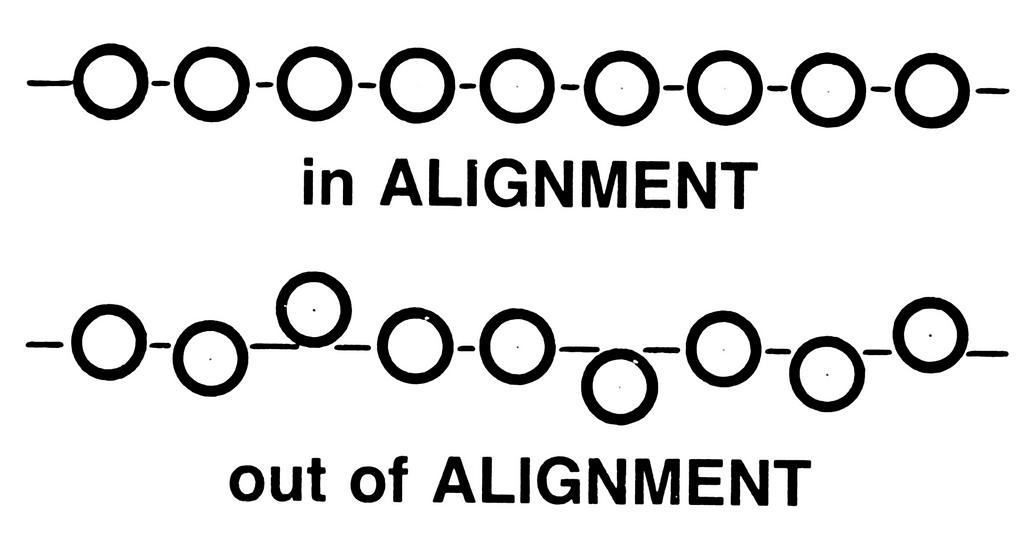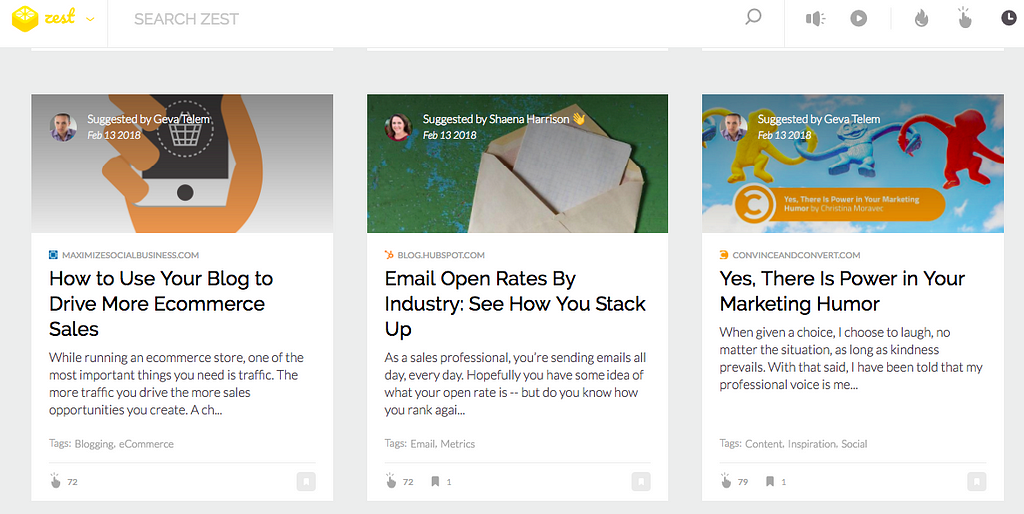Latest news about Bitcoin and all cryptocurrencies. Your daily crypto news habit.
 It all comes down to this one simple word.
It all comes down to this one simple word.
I have been using an amazing Chrome extension for the past several months — Zest. Yam Regev and his band of misfits came up with Zest a while back, and I have simply been in love with the app since I discovered it. How it works is fairly simple — every time I open up a new tab in Chrome, it shows me a bunch of interesting articles that marketeers are sharing with the community.
 A screenshot from today’s zest screen.
A screenshot from today’s zest screen.
Off late, my Zest feed has been full of stories about Artificial Intelligence, and Machine Learning. It is all the buzz, all the rage today. I have come across at least a few dozen startups in the past six months who are into ML/AI. There are more than 4,000 startups listed on AngelList who are doing something or the other in this space, and if you look at some of the work they have been doing, it is truly min-numbing. But, just as it with any other business segment, a lot of these promising startups will fail to stay afloat after a while. Many would struggle to find product-market fit, many would die down before they can start raking in a sustainable revenue stream, and quite a lot of them would end up with the frustration of wondering why their prospect customers do not see the immense value they are offering — which in their eyes is just so apparent!
That is a problem we witness with a lot of product companies. Amazing products but lukewarm response, at best. Why? Three main reasons:
- Trying to solve a problem that just doesn’t exist, or isn’t problematic enough. If the problem hasn’t yet become a throne in the side for me, there is a lower chance of me taking it seriously — that is a fact. Because at any time you come by me, I always do have a throbbing pain in my side. There is always a bigger pain-point for me occupying most of my mindspace. Something that I would always be more concerned about taking care of, as compared to a problem I can choose to live with, for the time being. Or worse, something that I hadn’t even started to identify as a problem till you made me realise it is one. You need to put yourself in your customers’ shoes and see life as he sees it. If he has something more critical to take care of, he would always do that first.
- Not positioning your product well. I have seen product companies talk a lot about their products — what does it do, how amazingly it does that, how it would leave you with a smile on your face. How do you know that? How do you know I am not smiling already? How can you make that assumption if you haven’t highlighted my obvious pain areas? Either do that, and do it well, or risk not being able to excite me for your grand unveiling of the solution.
- Not the right sales pitch. Talking about your product, or explaining how it works isn’t a sales pitch — it is you just geeking out. Sales is business, and you need to approach it in that way. If you expect someone to pay you a single dollar, you need to make sure they strongly believe in the value of what they are buying: (a) Time — Something that helps them cut down on the time they spend on a task they do frequently. Frequently — that is very important. If you are going to help me save even 60% of my time on a task I perform just once a month, you are wasting your efforts on saving 10 mins of my time way more than I would ever care. (b) Efficiency/Precision © Bandwidth — . You need to tailor your pitch in a way that makes me excited to have your product be a part of my life. It helps me make my mornings less strenuous so that I can enjoy my morning cup of coffee. It helps me make more money because it helps me answer questions my customers ask me.
- Not the right focus. Businesses tend to listen closely to every business owner and stakeholder who would show interest in what they are doing. That’s great; entrepreneurs should always be seeking feedback, and most importantly, listen to their target audience. But in a bid to get early traction, it sometimes results in coming up with MVPs for multiple products — one quite different from the other. Now that’s something I strongly advise against. If you are not in a position to explain what you do in a crisp and concise way to your audience, you would always struggle with positioning your brand as the authority on solving a problem. Also, once your focus is split between a few products, none of them would end up progressing the way it could have. So, choose one product, and stick with it. Don’t be the guy who makes lives easier for airlines. Start with being the guy who solves one (and only one) problem for them, and do it magnificently well. You want to come up with other products? Sure. But do that once you have established authority, expertise and dominance.
Just yesterday, I was talking to the founder of a startup who are offering retailers a simple, yet elegant solution to ‘measure and segregate’ the footfalls in their stores. How? By leveraging the CCTV cameras already present there. Their solution can tell you — with accuracy — how many customers have been walking into the stores, their gender, age group, and their overall emotional state. I am slightly skeptical about the last one, but even if only the first three work, it is an incredible value add to retailers everywhere, and the potential applications I see of such a system go beyond just retailers.
What I loved about their product?
The simplicity of it. It is a product that won’t need much explaining. It offers a value to the retailers — segregate and analyse their footfalls in an amazingly intuitive manner.
Why I think their product is great?
Because, even as an outsider, I know retailers already use processes to keep a tab on the footfalls in their stores. Some retailers would use a simple manual click-counter to keep a count of people entering their stores every hour. So, as a product, a retailer would (a) See the value of a system like this, (b) Appreciate how this product does what they already do (without the hassle of having an attendant do this with accuracy), and then adds more value on top of it (gender segregation, real-time comparative analysis with historical data, predict footfall in advance if correlated to external causes).
Is it just for retailers?
I don’t think so, but that’s a good starting point.
Think of it this way — any offline business where you may see a value add in segmenting your consumer base, this has a real application. Sky is the limit. Take the example of restaurants. If I know what kind of people are walking by at what time, and I map it across what kind of menu items are popular with different segments, I may be in a better position to keep my kitchen prepped, supplies stocked up and wait times short. I may even be able to break down my menu into smaller sub-menus and whip out the relevant menu to the people sitting at the tables. More focussed menu, less confusion in deciding on options, better conversion rates, increased profitability.
Do these few simple things well, and you would have moved an inch closer to both finding the product-market fit, and having a healthy ARR.
Medium | Twitter | Facebook | Quora | LinkedIn | E-mail
 Click here to join the mailing list.
Click here to join the mailing list.
Great products align with existing behaviors was originally published in Hacker Noon on Medium, where people are continuing the conversation by highlighting and responding to this story.
Disclaimer
The views and opinions expressed in this article are solely those of the authors and do not reflect the views of Bitcoin Insider. Every investment and trading move involves risk - this is especially true for cryptocurrencies given their volatility. We strongly advise our readers to conduct their own research when making a decision.
